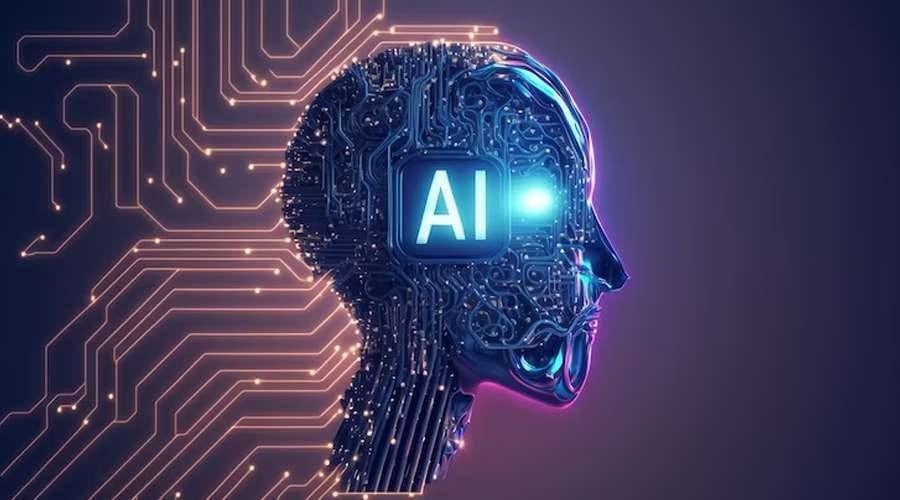New York City, June 2025 – The AI+ Summit 2025, held in Manhattan, brought together hundreds of global technologists, policy leaders, and business executives to discuss the future of Artificial Intelligence. While optimism around AI’s ability to reshape industries ran high, the Summit’s central theme struck a more sober tone: AI innovation is outpacing governance, oversight, and public understanding.
Panelists emphasized three pivotal transformations: the reinvention of software development through generative code, the mainstreaming of chat-based interactions across services, and the intensifying conversation around regulation. These inflection points, they agreed, mark a historic moment—but one filled with both opportunity and risk.
AI is Rewriting Software Development
One of the loudest signals from the Summit was that AI is fundamentally altering how software is built. What used to take weeks—designing logic, debugging code, and running tests—is now often accomplished in hours through code-generating models like OpenAI’s Codex, GitHub Copilot, and enterprise-specific AI development suites.
According to Arvind Subramaniam, CTO of a Fortune 100 tech company, AI models are reducing the barrier to entry in software engineering, enabling product teams to prototype and deploy rapidly without needing a traditional development lifecycle.
“AI isn’t replacing developers—it’s making every developer exponentially faster,” said Subramaniam. “This is the era of co-pilot engineering, where humans guide and AI executes.”
The shift has also led to new models of WebDev, with AI-generated websites, apps, and APIs becoming the norm rather than the exception. From small businesses to startups and multinational enterprises, teams are increasingly relying on AI tools that streamline code generation, automate UI/UX decisions, and detect bugs autonomously.
Still, some speakers warned against overreliance, highlighting the need for human oversight to ensure reliability, fairness, and security in AI-generated codebases.
Conversational Interfaces: Chat-Based UX Takes Over
AI’s second major inflection point, according to Summit participants, is its growing role in shaping conversational user experiences (UX). Chatbots, virtual agents, and multimodal interfaces are becoming standard gateways to services in finance, healthcare, education, and entertainment.
“The interface is the conversation,” said Amelia Zhao, head of product design at a global fintech firm. “Customers don’t want forms—they want answers.”
From customer support to personalized shopping, users now expect natural, contextual exchanges. And generative AI is delivering: LLM-powered bots can explain policy terms, troubleshoot errors, and even predict follow-up questions.
This trend is especially pronounced in Asia-Pacific markets, where recent surveys (like one by Adyen) show over 33% of consumers actively shop using AI-powered assistants. These figures are echoed in the U.S., where enterprise adoption of AI in customer service has more than doubled in the past 18 months.
The key challenge, however, remains context management—ensuring that chat-based systems can handle complex, multi-step interactions without losing track of intent.
AI and Regulation: A Growing Gap
While AI’s transformation of software and interaction models drew admiration, its regulatory oversight drew concern. Multiple keynote speakers expressed alarm that AI innovation is moving “orders of magnitude” faster than regulatory bodies can respond.
“We’re in a situation where the tools are global, but the laws are local—and lagging,” said Linda Romero, chair of the AI Ethics Committee at the UN Digital Governance Task Force.
The concern isn’t only about misuse or bias. Experts pointed out real and growing risks around Cybersecurity, misinformation, surveillance, and workforce disruption. In one breakout session, attendees debated how to balance innovation with guardrails—especially as models become more autonomous.
Several tech leaders advocated for self-governance frameworks, suggesting that companies voluntarily disclose training data sources, model risks, and use cases. Others called for urgent legislative action, noting that many nations are still deliberating over basic AI definitions while companies are already deploying Machine Learning to influence markets, elections, and behavior.
You can follow ongoing developments in global tech regulation via curated insights on AI News and Tech Press Releases.
Ethical AI and Responsible Development

Despite differing views on regulation, consensus emerged around the importance of ethical development. Several workshops tackled the need for transparent, explainable AI, particularly in high-stakes fields like finance, legal tech, and healthcare.
New compliance frameworks, such as “model accountability chains,” were introduced, detailing steps developers can take to track and audit AI outputs. Several companies shared initiatives in Data Science focused on eliminating algorithmic bias, anonymizing user data, and incorporating feedback loops from diverse demographics.
For example, a global pharmaceutical company showcased an internal platform where medical professionals can flag potential biases in AI-generated clinical suggestions. Another firm demonstrated tools that enable users to “query the model” about its reasoning—a step toward explainability.
Tokenomics and Blockchain in AI Infrastructure
Beyond UX and development, several panels explored how Blockchain and Tokenomics are intersecting with AI, particularly in data validation and decentralized training.
Decentralized AI marketplaces, such as Ocean Protocol and Fetch.ai, are gaining traction. These systems allow organizations to contribute and monetize datasets securely, with blockchain ensuring provenance and privacy.
Token-based incentives are being used to encourage data contribution and behavior alignment in AI ecosystems. For example, users can earn tokens for submitting verified data, rating AI outputs, or contributing compute resources. These mechanisms could offer alternatives to centralized AI monopolies.
While still nascent, these applications hint at a future where Web3 principles undergird AI infrastructure—creating distributed, democratic systems of intelligence.
For broader trends and implications, explore curated features on Tech Thrilled, your source for emerging technologies and thought leadership.
The Human Element: Reskilling, Jobs, and Digital Citizenship
Amid all the innovation, the Summit didn’t lose sight of its human impact. Panels emphasized the growing need for digital fluency and workforce adaptation.
“AI doesn’t eliminate work—it changes the nature of it,” said Dr. Miguel Ortiz, director at the Future of Work Institute. “The new must-have skills are collaboration, judgment, and prompt engineering.”
Several education startups and universities introduced initiatives to integrate AI literacy into general curricula—aiming to train not just developers, but journalists, lawyers, artists, and everyday users.
Others warned about a widening digital divide, urging inclusive access to AI tools and broadband infrastructure. In many developing nations, the challenge isn’t AI alignment—it’s AI access.
The Tech Demos: Gadgets, Experiments, and Next-Gen Interfaces
No major tech event is complete without futuristic showcases, and AI+ Summit didn’t disappoint. Several companies unveiled gadgets powered by AI chips, including:
- Smart rings that track health and send AI-powered lifestyle tips
- AR glasses with multilingual real-time translation
- Wearable LLMs embedded into everyday objects like watches and pens
Additionally, a startup introduced a “holographic tutor” that can guide students through math problems using voice, gesture, and light-based interactions—foreshadowing the convergence of AI with spatial computing.
Looking Forward: A Framework for Safe Acceleration
As the Summit concluded, speakers urged industry leaders, governments, and civil society to co-create frameworks for safe and inclusive AI development. Recommendations included:
- Multilateral regulatory sandboxes for experimentation
- AI literacy campaigns for public awareness
- Incentivized research into model safety and robustness
- Cross-sector partnerships for infrastructure sharing
One recurring phrase echoed across sessions: “Accelerate with responsibility.” It’s a call for balanced innovation—one that unlocks AI’s potential while protecting democratic values and human dignity.
Conclusion:
The AI+ Summit 2025 confirmed what many already suspected: Artificial Intelligence is now an engine of transformation, not just a tool. From reshaping how we code and communicate to redefining governance and ethics, AI has arrived at a point of no return.
Yet, as the Summit highlighted, real leadership lies in pacing that innovation with caution, context, and care. The technologies may be global, but the decisions shaping them are local—and deeply human.
As the world navigates this fast-changing frontier, Tech Thrilled will continue to bring you the latest AI news and tech analysis. Subscribe for updates, leave your comments, and share your thoughts on how we shape the future—together.
